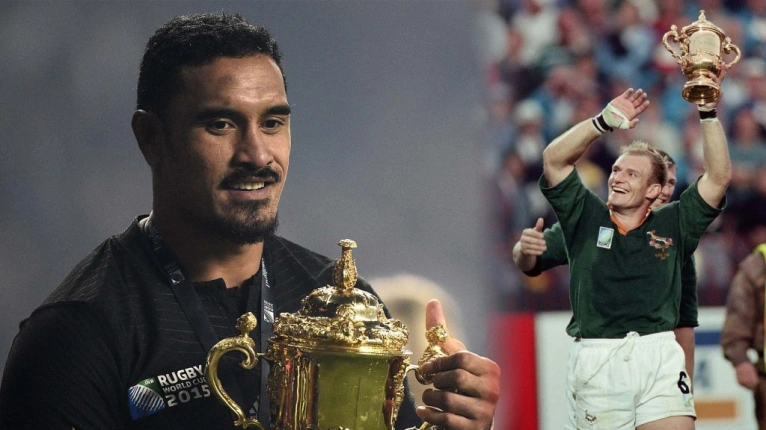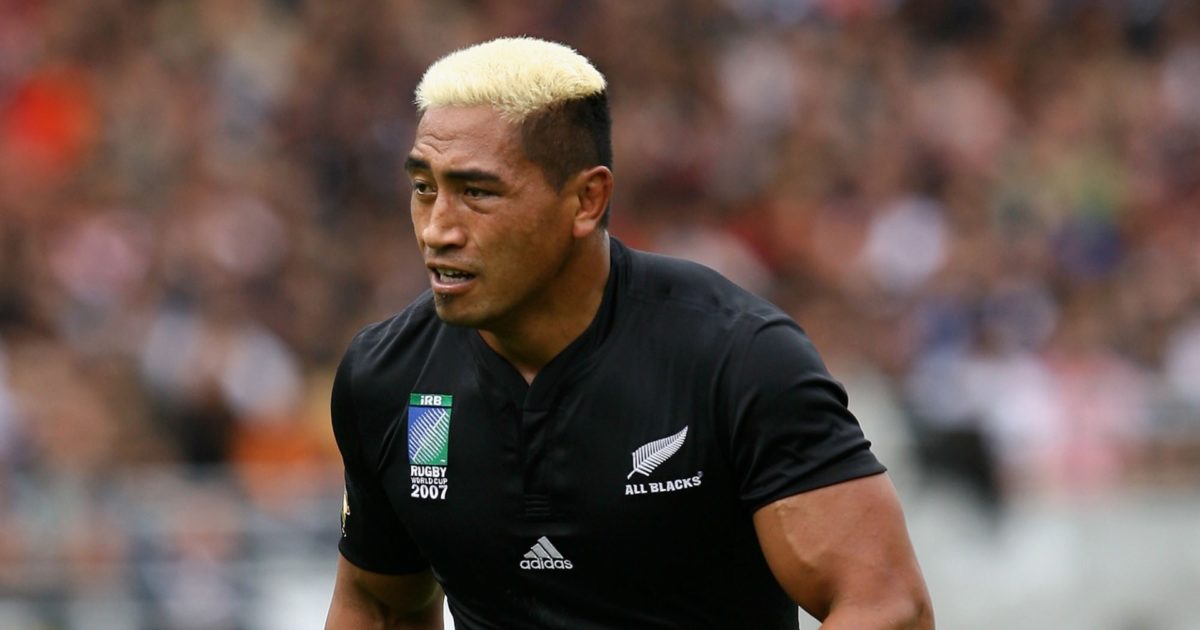Blindside Flanker - Position Guide

Each XV-a-side rugby team takes to the field with two flankers: an openside flanker and a blindside flanker. During the game, each of the two flankers plays a vital role in securing possession and ensuring the opposition cannot breach the defensive line.
Generally speaking, the flankers are the fastest forwards in the team. They are tasked with protecting the ball when their teammates are tackled and ensuring that the opposition do not gain possession. On top of this, they also provide support in attacking play and are expected to receive passes and engage in rucks.
In this position guide, we’ll discuss the role of the blindside flanker in much greater detail. We’ll cover the responsibilities of the position, the roles flankers play at set pieces and some of the finest blindside flankers to ever play the game.
What is a blindside flanker?
A blindside flanker is a forward. Alongside the openside flanker and the number eight, they line up at the back of the scrum. In fact, the term ‘flanker’ comes from the position of the two players in the scrum, where they ‘flank’ each set of forwards.
The blindside flanker is responsible for clearing out rucks. Primarily a defensive player on the blindside (hence the name), the blindside flanker aims to shut down the opposition’s scrum half or number eight.
Generally speaking, blindside flankers are physical players who relish competition and confrontation. Overall, the job of a blindside flanker is to ensure that the opposition do not get over the gain line. However, in the modern game, blindside flankers are also expected to carry the ball and attempt to break defensive lines. As large and physical players, they can be great for punching holes in defences and drawing attention to create gaps for others.
Other names for a blindside flanker
Some rugby positions around the world are known by different names. However, this isn’t the case with the blindside flanker, which is always known by the same term.
That said, there are some old fashioned and outdated names for the position, which you may still hear from time to time. For example, before rugby became professional, flankers were often known as breakaways. So, if you’re watching old rugby highlights, you may hear the blindside flanker called the blindside breakaway.
Sometimes, people also refer to the two flankers simply as flanks. Similarly, the flankers and the number eight are occasionally known as loose forwards, because they’re loosely bound to the scrum.
What number is a blindside flanker?
The blindside flanker operates alongside the openside flanker and the number eight. Together, these three players make up the back row of the scrum.
While the blindside flanker wears 6, the openside flanker wears 7. As you would expect from the name, the number eight wears the 8 jersey.
What is the average size of a blindside flanker?
In the modern game, both flankers in a team are used as options at the lineout (we’ll go into this in greater detail later). As a result, a blindside flanker tends to be one of the tallest players on the pitch. At the elite level, the average blindside flanker is around 1.92m (6ft 4in) tall. This makes them slightly taller than the average openside flanker, who is around 1.89m (6ft 3in) tall.
Due to their specific roles and responsibilities during a game, a blindside flanker must be strong and powerful. However, they also need to be mobile and agile. As a result, they need to balance muscle mass with mobility and acceleration. That said, blindside flankers are heavy, and elite players in this position generally weigh around 105kg-110kg, or 242lbs-253lbs.
Of course, you don’t have to be as tall or as muscular as this to play as a blindside flanker in club rugby. However, these statistics do give you a really good idea of just how big, strong and powerful people who play international rugby in this position need to be.
What is the blindside flanker’s role?
So, we now know the basics of what the blindside flanker does during a game and the physical attributes they need to have. But, what’s their role at set pieces and during open play? Well, let’s take a detailed look.
What is the blindside flanker’s role in scrums?
The two flankers (the openside and the blindside) do not usually bind to the scrum in a fixed position. Instead, the openside flanker attaches to the scrum on whichever side is further from the touchline. The blindside flanker then attaches themselves to the scrum on the side closer to the touchline.
In the scrum, the flankers do not push as much as the front five players. Instead of providing push power, the role of the blindside flanker is to stop any move by their opponents on the blindside of the scrum. Due to this, the blindside flanker needs to be fast. This way, they can break quickly and provide cover.
What is the blindside flanker’s role in lineouts?
At the lineout, the blindside flanker provides a third option (behind the two second rows). Due to their size and mobility, they’re expected to jump and create a credible threat. They’re also expected to be able to lift the locks.
To excel at the lineout, a blindside flanker needs an explosive jump, impressive ball handling skills and the ability to lift teammates to compete for the ball. Plus, blindside flankers also need to be agile and quick so they can move around and confuse the opposition.
On top of this, the blindside flanker plays a vital role in the opposition’s lineout. Here, they’re responsible for wrecking the opposition’s game plan. They can do this by correctly reading the opposition’s throw and getting up in front of the rival jumper to claim the ball. Alternatively, if an opposition player emerges with the ball from the back of the lineout, the blindside flanker should be on the scene and ready to make a big hit.
What is the blindside flanker’s role in open play?
A successful blindside flanker must exert their physicality on the game. This is most notably done in tackles. Due to this, the blindside flanker is usually the biggest hitting player on a team and is normally tasked with bringing down the opposition’s power carriers. Generally speaking, a blindside flanker makes between 12 and 14 tackles every single game.
To be effective at this, the blindside flanker must stay low in the tackle and drive up through the ball carriers, denying them any momentum. On occasion though, they are also required to tackle higher and attempt to prevent any offloading opportunities.
Blindside flankers are the workhorses of a defensive unit. They’re one of the busiest players and they’re required to make multiple tackles in a short number of phases. Due to this, they need to have great levels of stamina and an exceptional work rate.
On top of this, blindside flankers in the modern game also help influence the battle at the breakdown. They need to be accurate and efficient and steal possession if the opportunity presents itself.
Finally, when in possession, the blindside flanker must be prepared to be a ball carrier. They must use their mobility and athletic ability to make breaks as a ball carrier, support other breaks and take the ball into contact.
Notable blindside flankers

As part of our recent Hall of Fame, we asked rugby fans from around the world to tell us who their favourite blindside flanker of all time was.
Unsurprisingly, legendary All Blacks blindside flanker Jerome Kaino came out on top. He gained more than double the amount of votes of Thierry Dusautoir, who came second.
Other notable blindside flankers who garnered votes include Francois Pienaar and Jerry Collins.
FAQs
To help you learn even more about the blindside flanker position, we’ve answered a number of popular reader questions. So, read on to discover more about the training regime of a blindside flanker, and what the differences are between an openside and blindside flanker.
What is the difference between open and blindside flanker?
Truth be told, there often isn’t too much difference between the openside and blindside flanker in a rugby union team.
In fact, having a specialist openside and blindside flanker is a relatively modern phenomenon. That said, there are some differences between the two positions. Chiefly, the openside flanker is required to cover more ground than the blindside flanker is.
Overall, the openside flanker is usually faster than their blindside counterpart. They’re responsible for springing up from tackles and moving quickly to get into a new defensive position. As a result, they’re usually also slightly more agile than blindside flankers. Due to these requirements, they’re also usually the lighter of the team’s two flankers.
But, if the openside flanker is lighter, then the blindside flanker is required to provide grunt and ballast. They’re then responsible for putting this additional bulk to good use by putting in big hits and dominant tackles. Plus, blindside flankers are also used as battering rams in attack. Even if they don’t break through the opposition line, the aim is for it to require at least two defenders to take them down, so more space is available for their teammates.
How strong are blindside flankers?
As we’ve mentioned, blindside flankers are incredibly strong players who need to relish contact and make tackle after tackle.
Responsible for lifting and jumping at the lineout, making tackles and wrestling others for possession of the ball, blindside flankers need strength throughout their body. Due to this, top level blindside flankers can:
Squat 1.6x their body weight
Bench press 1.3x their body weight
Run 3km in 11 mins 45 seconds
Sprint 40m in under 5.3 seconds
Do you have any scrummaging tips for blindside flankers?
Although they don’t provide the bulk of the pushing power, the blindside flanker and the openside flanker are both expected to put their weight into the scrum.
As the blindside flanker, when you bind into the scrum, you should bind with your inside arm going along the back of the lock closest to you. Your inner shoulder will then drive the prop in front of you, which generates forward momentum.
But, as you push, you need to keep an eye on the opposition. Watch their number eight closely. If they leave the scrum and run to your side, then you’re responsible for making the first tackle.
What exercises do blindside flankers complete in the gym?
Blindside flankers need strength throughout their body. However, the leg muscles and pressing muscles (such as the triceps, chest and shoulders) of a blindside flanker need to be particularly strong.
Due to this, if you’re a blindside flanker, then in the gym you should focus on performing:
- Deadlifts
- Squats
- Bench press
- Overhead press
- Lunges
- Barbell rows



















































